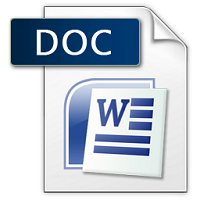Original price was: ₹500.00.₹299.00Current price is: ₹299.00.
Note – Scroll down and match your questions
Note- Unique Ready to Upload
700 per assignment
Unique order via whatsapp only
Whatsapp +91 8791490301
Description
Strategic Cost Management
Jun 2025 Examination
Q1. Tachi Ltd. is a mid-sized manufacturing company producing two product lines: Standard Widgets and Custom Widgets. The company has been using Traditional Costing to allocate overhead costs, based on machine hours. However, the management has noticed that despite increased production efficiency, profit margins are declining, especially for Standard Widgets.
A cost consultant suggests implementing Activity-Based Costing (ABC) to allocate costs more accurately based on actual resource consumption. After an initial analysis, it is found that Custom Widgets require more design modifications, customer support, and quality checks compared to Standard Widgets. The consultant argues that the current system is over-costing Standard Widgets and under-costing Custom Widgets. Analyze the situation and compare Traditional Costing and Activity-Based Costing in the context of Tachi Ltd. Justify whether implementing ABC would benefit Tachi Ltd. (10 Marks)
Ans 1.
Introduction
Tachi Ltd., a mid-sized manufacturing company, is experiencing a decline in profit margins despite improved production efficiency, especially in its Standard Widgets line. The company currently uses the Traditional Costing method, allocating overheads based on machine hours. However, this may not reflect the true cost dynamics of its two distinct product lines—Standard Widgets and Custom Widgets. A cost consultant recommends shifting to Activity-Based Costing (ABC), arguing that Custom Widgets consume more indirect resources such as customer support, design
Fully solved you can download
ASSIGNMENTS JUNE 2025
- Fully Solved, High Quality
- Lowest Price Guarantee: Just ₹299 per Assignment!
- 100% Original & Manually Solved (No AI/ChatGPT!)
Hurry! Last Date: 29 May 2025
- Order Now: com/online-buy-2/
Quick Response Guaranteed!
For Unique Assignment please contact on
- WhatsApp: 8791490301
- [email protected]
- aapkieducation.com
Q2. Active Ltd. is a consumer electronics company operating in a highly competitive market. The management wants to evaluate the company’s financial performance over the last two years to understand its profitability and efficiency trends. The following financial data is provided for the past two years:
|
Particulars |
Year 1 (Rs. in
Lakhs) |
Year 2 (Rs. in
Lakhs) |
| Sales | 1,200 | 1,400 |
|
Cost of Goods Sold |
720 |
920 |
| Net Profit | 120 | 110 |
| Total Assets | 800 | 1,100 |
|
Shareholders’ Equity |
500 |
650 |
You’re required to calculate the following financial ratios for both years:
- Gross Profit Margin
- Net Profit Margin
- Return on Assets (ignore taking average)
- Return on Equity (ignore taking average)
Analyze the trends in these ratios and comment on the company’s financial performance. (10 Marks)
Ans 2.
Introduction
In a highly competitive consumer electronics market, financial performance evaluation plays a pivotal role in strategic decision-making. Active Ltd., a mid-sized company, seeks to understand its profitability and efficiency over a two-year period to make informed management choices. Financial ratios serve as key indicators that reflect how effectively a company utilizes its resources, manages its costs, and generates returns for shareholders. By analyzing critical ratios such as Gross Profit Margin, Net Profit Margin, Return on Assets (ROA), and Return on Equity (ROE), the company can gain insight into cost control, revenue quality, and asset and equity utilization. A proper interpretation of these ratios not only reveals performance trends
Q3A. Beta Ltd. is a growing manufacturing company that produces a single product. The company’s management is evaluating its cost structure to prepare a budget for different production levels. The finance team has provided the following cost details: Variable Costs per unit:
■ Direct Materials: Rs.50
■ Direct Labor: Rs.30
■ Variable Overheads: Rs.20
Fixed Costs:
■ Fixed Overheads: Rs.40,000 per month
The company is considering two possible production levels: 1,000 units and 1,500 units. You’re required to, based on the given cost structure, prepare a Flexible Budget for both capacity levels (5 Marks)
Ans 3a.
Introduction
Budgeting is an essential tool for planning and controlling costs in any manufacturing setup. Flexible budgeting allows businesses to adjust budgets based on actual output levels. In the case of Beta Ltd., which produces a single product, preparing a flexible budget for different production volumes helps the management understand how costs vary with changes in activity levels. It also supports better forecasting, cost management, and decision-making by providing accurate projections for
Q3B. Beta Ltd. is a growing manufacturing company that produces a single product. The company’s management is evaluating its cost structure to prepare a budget for different production levels. The finance team has provided the following cost details: Variable Costs per unit:
■ Direct Materials: Rs.50
■ Direct Labor: Rs.30
■ Variable Overheads: Rs.20
Fixed Costs:
■ Fixed Overheads: Rs.40,000 per month
The company is considering two possible production levels: 1,000 units and 1,500 units. You’re required to analyze the impact of increasing production on total costs. (5 Marks)
Ans 3b.
Introduction
Understanding how total costs behave with changes in production volume is critical for effective financial planning. Beta Ltd., a single-product manufacturer, is evaluating the cost implications of increasing output from 1,000 to 1,500 units. Analyzing cost behavior—specifically how variable and fixed costs respond to higher activity levels—helps management make informed production and pricing decisions. This analysis offers insights into cost control, economies of scale, and profitability potential, which are key for sustainable growth in a


